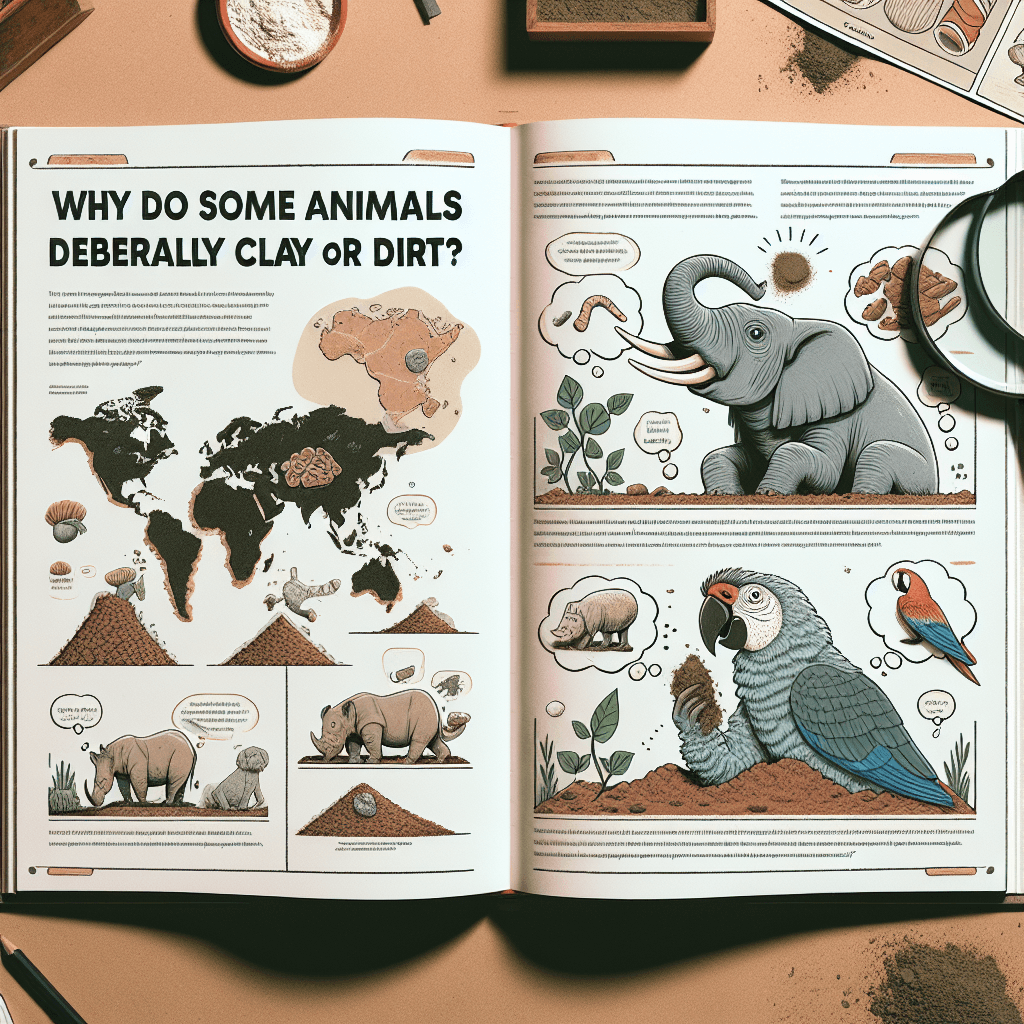Why do some animals deliberately eat clay or dirt
From parrots to primates, eating dirt isn't a strange mistake but a calculated survival strategy with surprising medicinal benefits that can neutralize deadly poisons.


Too Long; Didn't Read
TLDR: Animals eat clay and dirt to get essential minerals their diet lacks, to neutralize toxins from plants they eat, and to soothe upset stomachs.
Nature's Pharmacy: Why Do Some Animals Deliberately Eat Clay or Dirt?
Have you ever seen a vibrant macaw nibbling on a drab cliffside, or a massive elephant carefully scooping up soil with its trunk? While it may seem bizarre, the intentional consumption of earth—a behavior known as geophagy—is a widespread and fascinating survival strategy across the animal kingdom. This isn't just a random craving; it's a calculated act driven by powerful biological needs. For centuries, scientists and naturalists have observed this behavior in creatures ranging from bats and butterflies to primates and parrots. This post will dig into the science behind this earthy appetite, exploring the primary reasons why some animals deliberately eat clay or dirt.
A Taste for Earth: Defining Geophagy
Geophagy, derived from the Greek words geo (earth) and phagein (to eat), is the intentional practice of consuming soil, clay, or other earthen materials. It's crucial to distinguish this from the accidental ingestion of dirt while foraging. Animals that practice geophagy actively seek out specific soil types or clay deposits, often traveling long distances to find them. These locations, known as "licks" or "clay licks," become vital hubs of activity, attracting diverse species who come to get their fix. But what exactly are they getting from this seemingly unappetizing meal? Research points to three main benefits.
The Main Reasons Animals Eat Dirt
A Natural Mineral Supplement
One of the most widely accepted theories is that animals eat dirt to supplement their diets with essential minerals. This is especially true for herbivores living in environments where the vegetation is deficient in key nutrients.
Soils and clays can be rich sources of crucial elements like:
- Sodium: Essential for nerve function and water balance, sodium is often scarce in plants.
- Calcium: Vital for bone growth, muscle function, and eggshell production.
- Iron and Magnesium: Important for blood health and metabolic processes.
A classic example is the African elephants of Mount Elgon, who are known to venture deep into caves to mine salt-rich soil. Their regular plant-based diet doesn't provide enough sodium, so they rely on geophagy to maintain their health.
Nature's Antacid and Toxin Binder
Many plants defend themselves with toxic compounds like alkaloids and tannins to deter herbivores. While animals have evolved ways to process some of these toxins, a diet high in them can still be harmful. This is where clay becomes a powerful medicine.
Certain types of clay, like kaolin and bentonite, have an incredible ability to bind to harmful substances. The clay particles act like a magnet, attaching to toxins and other pathogens in the gut. This prevents the poisons from being absorbed into the bloodstream and allows the animal to pass them safely. Researchers studying macaws in the Amazon basin have observed them flocking to clay licks, particularly after feeding on unripe fruits and seeds that are high in toxins. The clay effectively neutralizes their potentially poisonous meal, acting as a natural detoxifier and stomach-soother.
Aiding Digestion and Fighting Parasites
Beyond minerals and detoxification, eating earth can also support digestive health. The gritty, abrasive texture of some soils may help grind up tough plant material in the gut, particularly for birds that lack teeth. Furthermore, some clays are believed to coat the stomach lining, offering protection against chemical irritation and physical damage. There is also growing evidence that geophagy can help combat internal parasites and pathogens. The same binding properties that neutralize toxins can also help control harmful bacteria and parasites in the digestive tract, functioning as a primitive form of self-medication.
Conclusion
The act of eating dirt is far from a strange quirk; it is a sophisticated, instinctual survival strategy honed over millennia. For many animals, the earth itself serves as a combination of a pharmacy, a mineral supplement, and a digestive aid. By deliberately consuming specific soils and clays, they can neutralize toxins, balance their mineral intake, and protect their gut health. This remarkable behavior showcases the intricate relationship between animals and their environment, reminding us that nature often holds the most elegant solutions to life’s most fundamental challenges. So, the next time you see an animal eating dirt, you'll know it's likely filling a crucial prescription from nature's oldest pharmacy.
More Articles

Why do many jet engines have a white spiral painted on their center cone?
That mesmerizing spiral on a jet engine isn't just a quirky design—it's a simple but brilliant visual trick that serves as a life-or-death warning to ground crews.

Why is the Statue of Liberty green instead of copper-colored?
She didn't always have that famous green glow; discover the 30-year chemical reaction that transformed Lady Liberty from a shiny copper statue into the iconic symbol we know today.

Why were cats once arranged in a box to be played as a musical instrument?
It sounds like a macabre myth, but for a brief, bizarre period in history, the world's cruelest instrument was designed to jolt a monarch from melancholy using a symphony of feline shrieks.